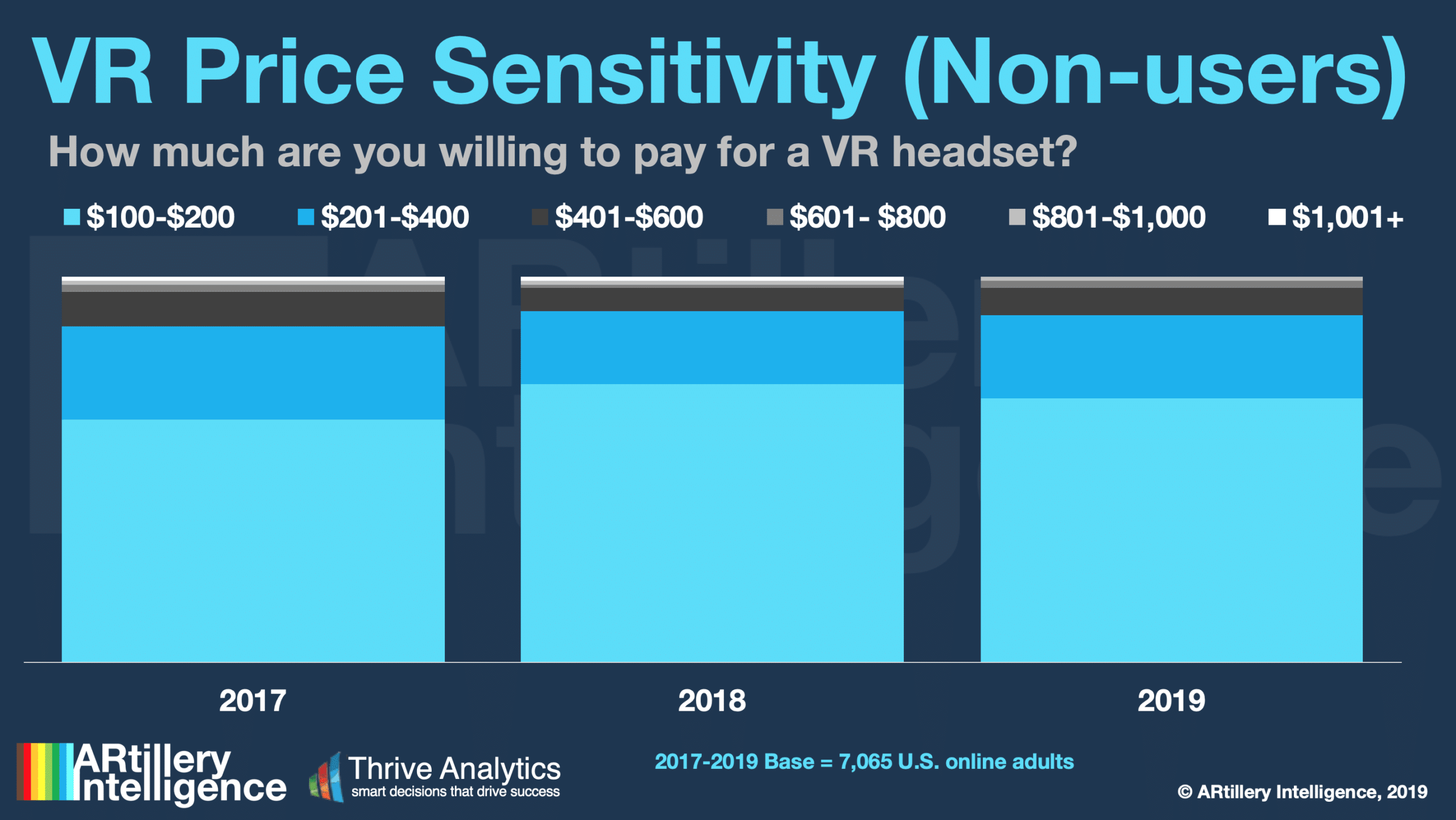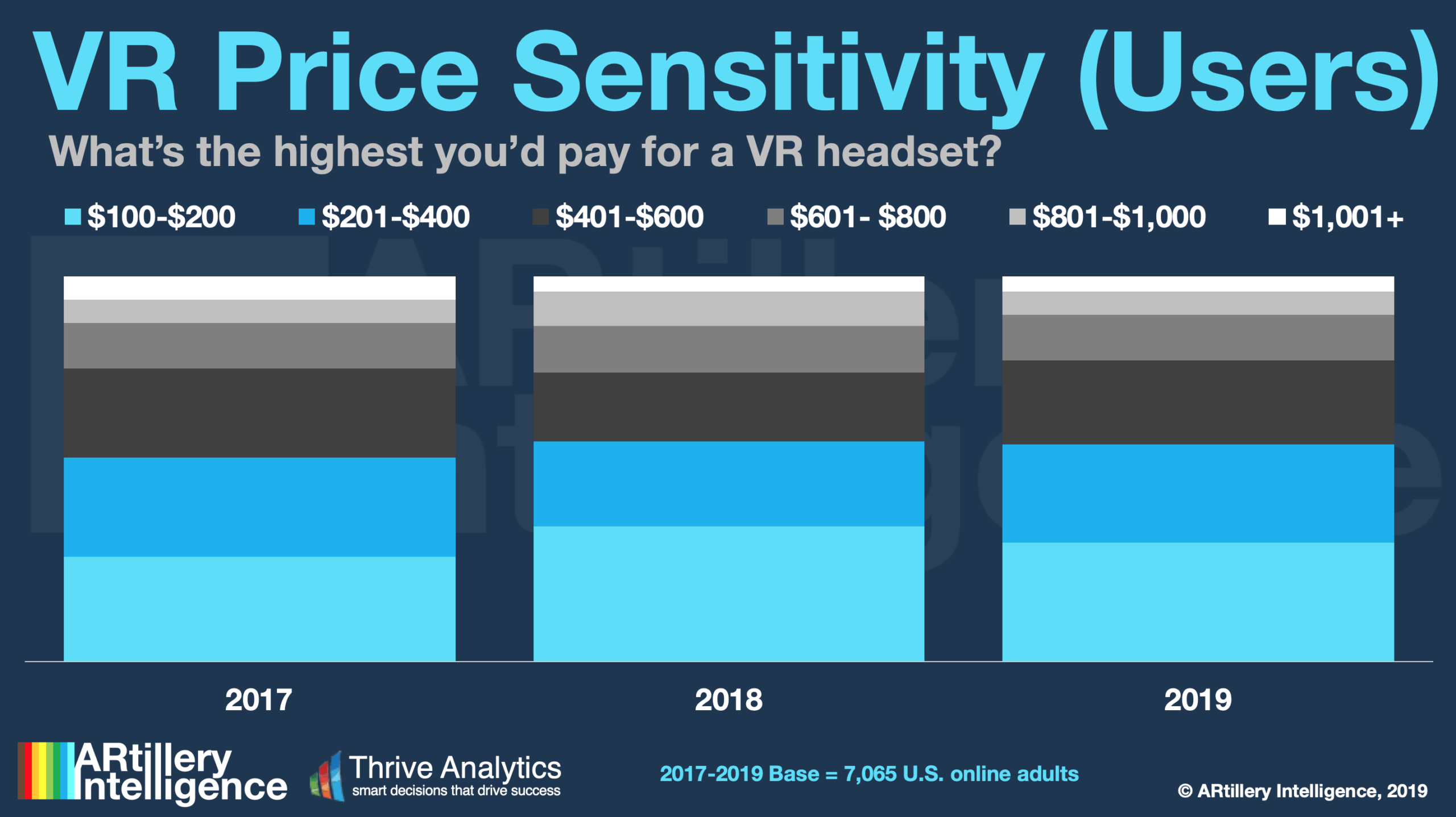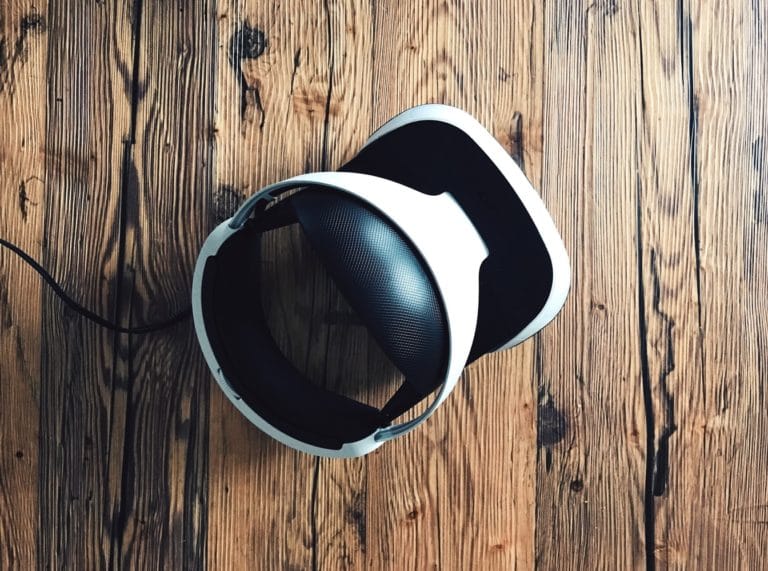
Data Point of the Week is AR Insider’s dive into the latest spatial computing figures. It includes data points, along with narrative insights and takeaways. For an indexed collection of data and reports, subscribe to ARtillery Pro.
In June, we extrapolated that PSVR is nearing 5 million cumulative units sold. That milestone has now been reached, as announced at Sony’s CES press conference. This further validates the projections of our research arm ARtillery Intelligence that PSVR is the VR market share leader.
The news has been well covered so we’ll spend time on strategic implications. Much of PSVR’s success is owed to a few factors. The first is convenience. It piggybacks on 106 million PS4s in market, which reduces VR’s cumbersome setup and the need for a separate high-end gaming PC.
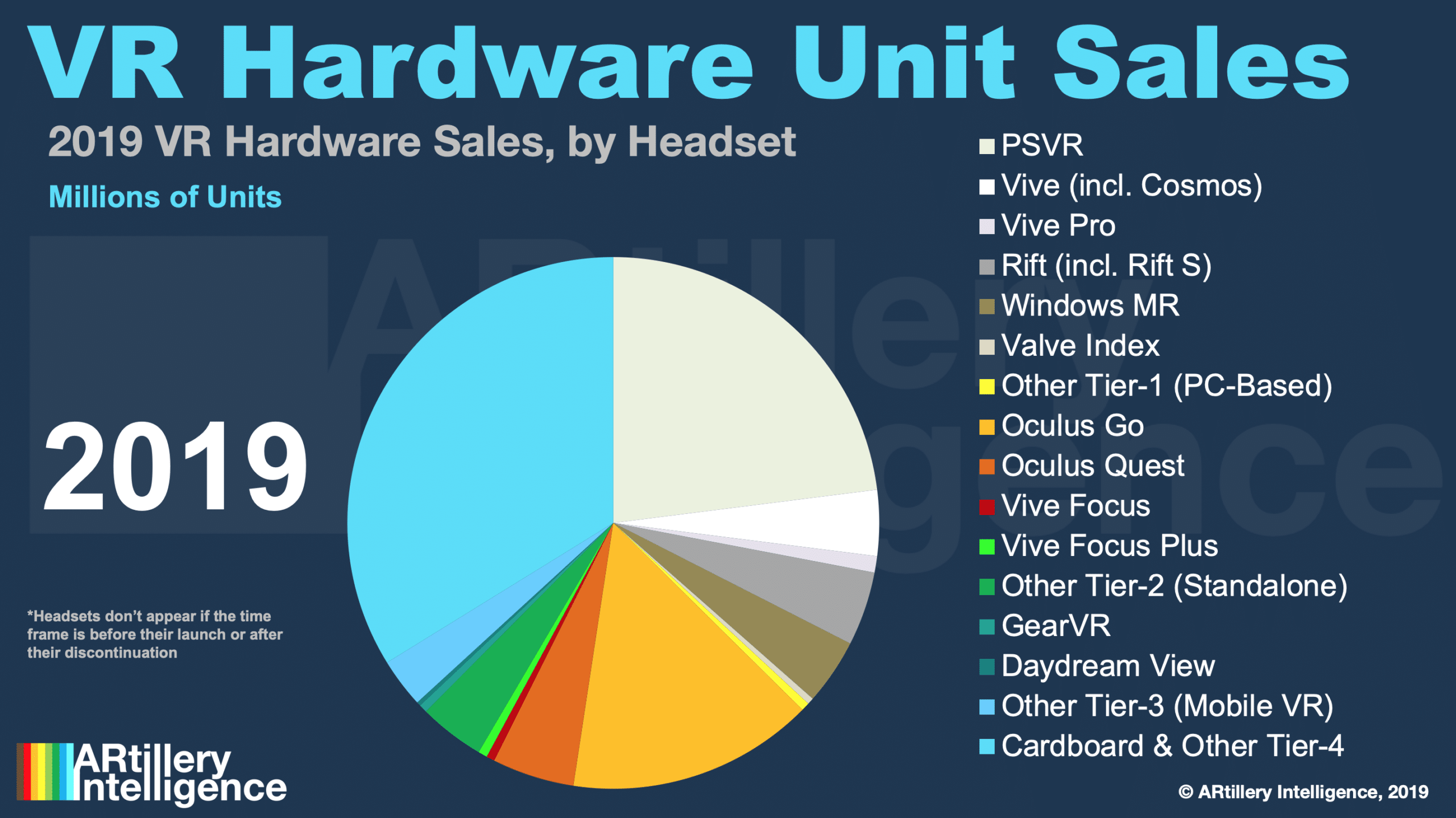
The second is fun. PSVR has outsold its tier-1 competitors like Rift and Vive on an experience sell versus a spec sheet (resolution, field of view, etc.). We can point to price and convenience for PSVR’s lead but we can’t ignore the fact that satisfaction ratings exceed higher-spec’d rivals.
According to ARtillery Intelligence’s consumer survey with Thrive Analytics’, PSVR has higher satisfaction than HTC VIVE for the third year in a row (see below). This says a lot about Sony’s approach to put experience and convenience over technical specs and processing horsepower.
Conceptually, this is a very Nintendo-like strategy, a la Wii and Switch. Speaking of Nintendo Switch, we’ve made the same analogy for Oculus Quest. It likewise trades “specs for scale” in choosing untethered convenience and overall experience over specs (more on that in a bit).
The third factor is price. PSVR’s $399 is an all-in price point if you already own a PS4, which goes back to the point about sidestepping a costly gaming PC. This is notably a price point where demand inflects according to the aforementioned ARtillery/Thrive consumer VR survey.
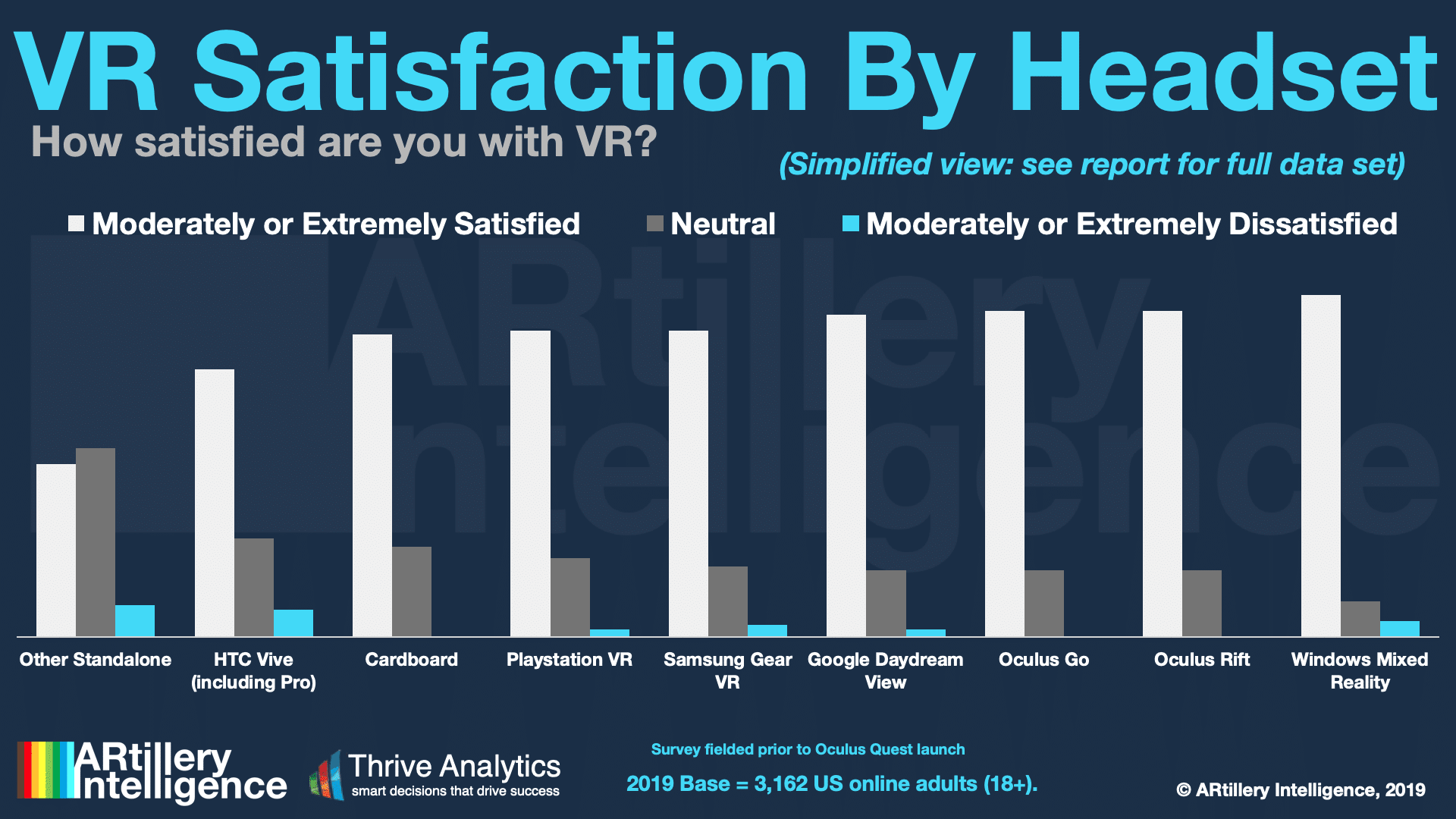
But it’s not all good news. PSVR sales are decelerating when examining it’s unit sales growth from past disclosures. Before discussing why, we must point out the fundamental market-sizing reality that percentage growth will naturally diminish as the base increases, given linear unit growth.
That aside, there are a few possible reasons for a slight dip in actual unit growth. The first is less discouraging to PSVR itself: PS4 is reaching its end of life with PS5 already announced for late 2020. That means less buyer incentive due to uncertainty in PSVR, not to mention aging specs. 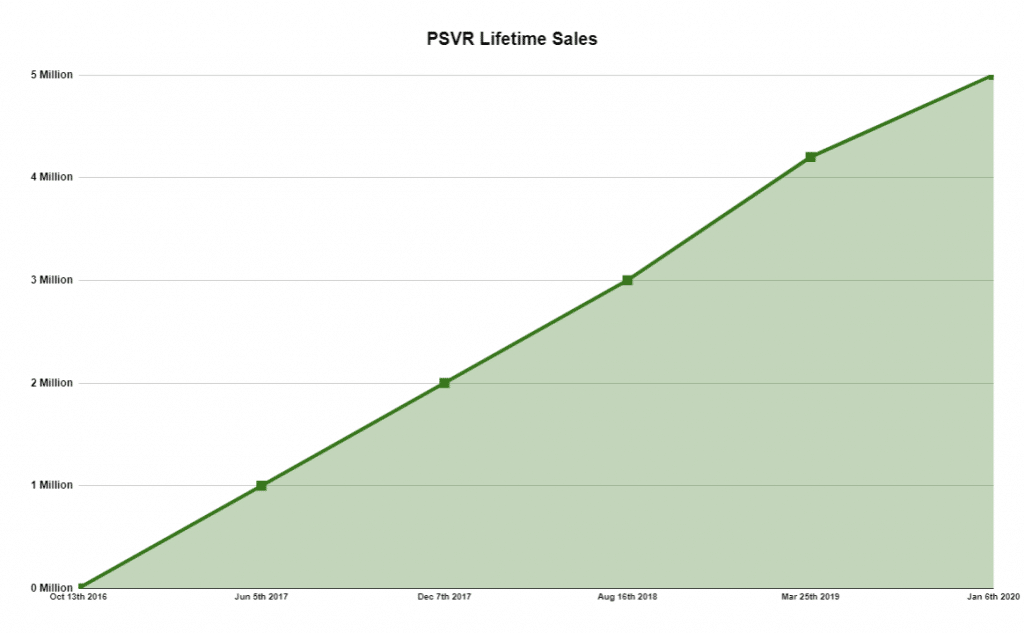
The second reason is more worrisome for PSVR: Oculus Quest. Quest enters the market with several of the same advantages mentioned above, but in an untethered form factor. It not only has the same price point but a similar simplicity-driven product strategy and “experience sell.”
“Oculus seems to be betting a lot of people will be happy with a convenient, lower-powered headset that plays a smaller number of games,” said The Verge’s Adi Robertson. “[PSVR] is making the same play… Oculus could tap into that market with something even more convenient.”
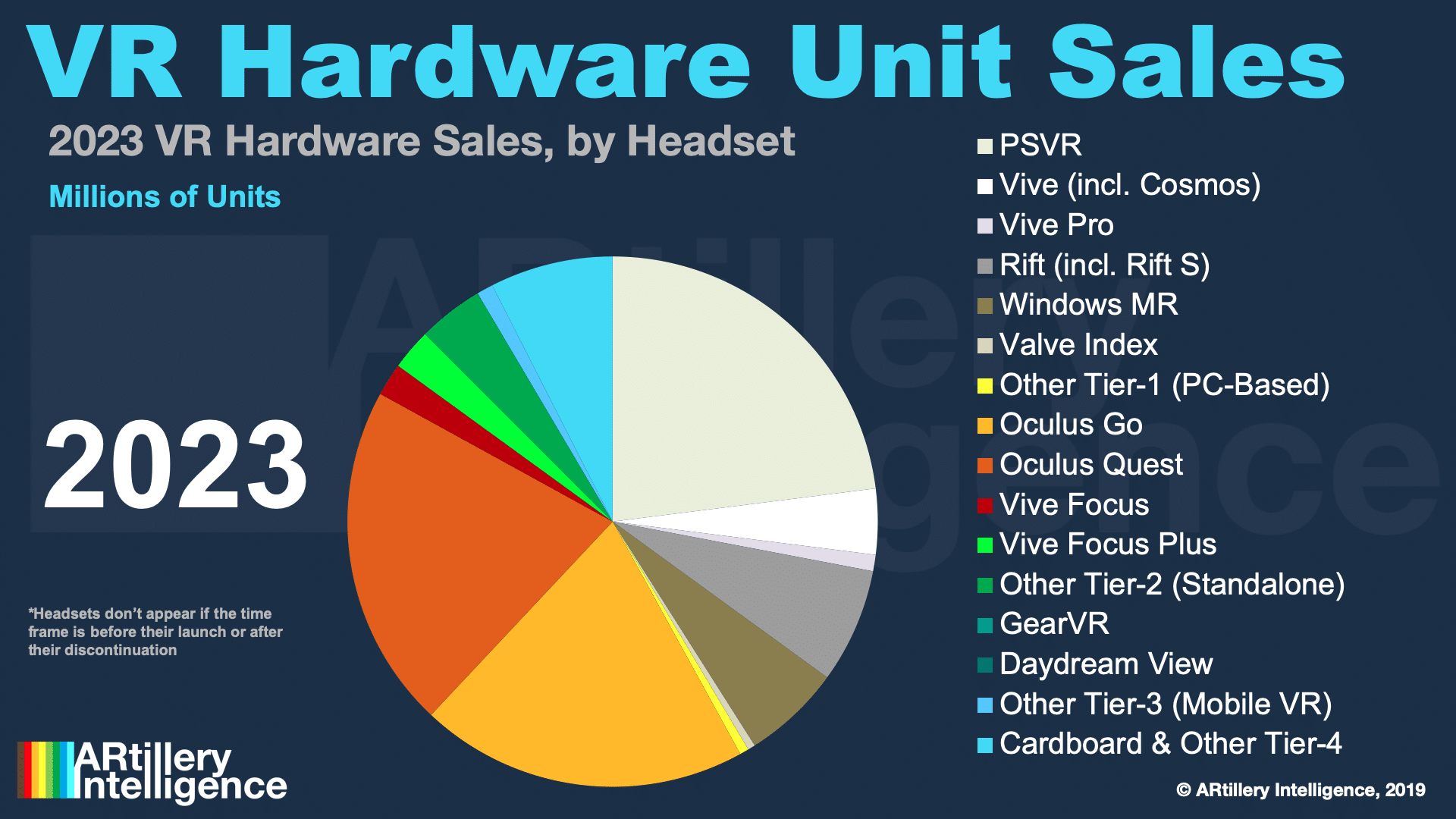
This plays out in ARtillery projections in terms of Oculus market share growth, partly at the cost of PSVR. This is informed by factors including Oculus aggressive loss-leader pricing advantage. To be clear, we’re talking shifts in market share… Unit sales will grow for both products.
Meanwhile, ARtillery/Thrive’s next VR survey wave will publish in Q3 (view the previous wave here), There will be lots of new findings, especially in support of standalone VR such as Oculus Quest — also reflected in the separate VR revenue forecast. There will be a lot to watch in 2020.
For deeper XR data and intelligence, join ARtillery PRO and subscribe to the free AR Insider Weekly newsletter.
Disclosure: AR Insider has no financial stake in the companies mentioned in this post, nor received payment for its production. Disclosure and ethics policy can be seen here.
Header Image Credit: @jenskreuter

